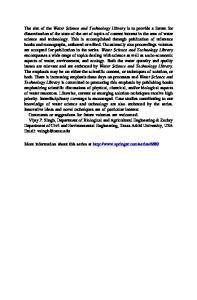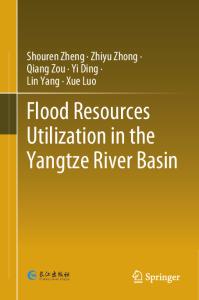Comprehensive evaluation of hydrological models for climate change impact assessment in the Upper Yangtze River Basin, C
- PDF / 2,594,670 Bytes
- 20 Pages / 439.37 x 666.142 pts Page_size
- 94 Downloads / 410 Views
Comprehensive evaluation of hydrological models for climate change impact assessment in the Upper Yangtze River Basin, China Shanshan Wen, et al. [full author details at the end of the article] Received: 15 January 2020 / Accepted: 29 October 2020/ # Springer Nature B.V. 2020
Abstract
Climate change has substantial impacts on regional hydrology in the major river basins. To figure out such latent hydrological impacts of changing climate, more reliable hydrological simulations are imperative. In this study, we evaluated the impacts of climate change on hydrological regime in the Upper Yangtze River Basin based on four downscaled and bias-corrected Global Climate Model outputs from Coupled Model Intercomparison Project Phase 5 under four Representative Concentration Pathways (RCP2.6, RCP4.5, RCP6.0, and RCP8.5) driving three hydrological models. Two model evaluation approaches were applied: simple and comprehensive. The comprehensive approach was used to evaluate models in the historical period, optimizing objective function at four gauges, and hydrological models were weighted for impact assessment based on their performance. In such a way, projected streamflow time series are obtained under different emission scenarios. Results show that the annual average discharge is projected to increase by 4.1–10.5% under the RCP scenarios at the end of twenty-first century relative to the reference period (1970–1999). Moreover, the high flow is projected to increase and the low flow to decrease indicating a higher probability of flood and drought occurrence in the basin. The severity of floods and droughts may increase. In comparison with the simple one-site model evaluation approach, the comprehensive method reveals that the anticipated extreme flow events would be less severe, and annual mean discharge slightly lower. The projected results imply that application of the comprehensive model evaluation approach could narrow the simulated spreads of projections significantly, and might provide more credible results. Keywords Hydrological modeling . Discharge . Comprehensive model evaluation . Model weighting . Upper Yangtze River Basin
Shanshan Wen, Buda Su and Tong Jiang contributed equally to this work. This article is part of a Special Issue on “How evaluation of hydrological models influences results of climate impact assessment", edited by Valentina Krysanova, Fred Hattermann, and Zbigniew Kundzewicz Shanshan Wen and Buda Su are first authors
Climatic Change
1 Introduction Climate change is a present reality that alters our physical environment and perturbs the societies around the globe. The earth’s temperature equilibrium has been destabilized due to enhanced global warming, resulting in changes of the radiation balance of ground surface and atmosphere circulation. The global warming speeds up the circulation of water vapor, influences the spatiotemporal distribution and intensity of precipitation, directly influences the hydrological features, such as evaporation, runoff, and soil water, which could lead to raise o
Data Loading...











